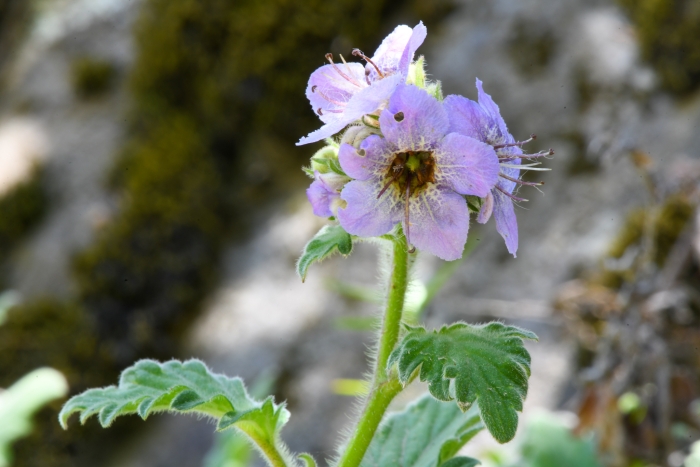Bolander’s Phacelia
(Phacelia bolanderi)
Bolander’s Phacelia (Phacelia bolanderi)
/
/

Chloe and Trevor Van Loon
CC BY 4.0
Image By:
Chloe and Trevor Van Loon
Recorded By:
Copyright:
CC BY 4.0
Copyright Notice:
Photo by: Chloe and Trevor Van Loon | License Type: CC BY 4.0 | License URL: http://creativecommons.org/licenses/by/4.0/ | Rights Holder: Chloe and Trevor Van Loon | Publisher: iNaturalist | Date Created: 2021-05-29T11:42:52-07:00 |















Estimated Native Range
Summary
Phacelia bolanderi, commonly known as Bolander’s Phacelia, is a deciduous perennial herb that thrives in the understory of coniferous forests, along streams in riparian zones, and in chaparral and scrub habitats of the Pacific Northwest, including Oregon and coastal northern California. It typically grows to a modest height of 1-2 feet (30-60 cm) with a similar spread. Bolander’s Phacelia is characterized by its deeply lobed and strongly toothed leaves, which are reminiscent of grape leaves, and its clusters of inch-wide flowers that come in shades of purple, lavender, or blue. The plant is notable for its late flowering period, often blooming during the peak of summer when many other species have finished their display.
This species is valued for its ability to provide color in the garden during the hot summer months when few other plants are in bloom. It is suitable for wildflower gardens, native plant landscapes, and as a border plant in drought-tolerant gardens. Bolander’s Phacelia is adapted to a range of soil types and is particularly drought-resistant, requiring very low amounts of water once established. It prefers full sun to part shade and can tolerate a variety of drainage conditions. While it is generally low-maintenance, it can be susceptible to powdery mildew in humid conditions.CC BY-SA 4.0
This species is valued for its ability to provide color in the garden during the hot summer months when few other plants are in bloom. It is suitable for wildflower gardens, native plant landscapes, and as a border plant in drought-tolerant gardens. Bolander’s Phacelia is adapted to a range of soil types and is particularly drought-resistant, requiring very low amounts of water once established. It prefers full sun to part shade and can tolerate a variety of drainage conditions. While it is generally low-maintenance, it can be susceptible to powdery mildew in humid conditions.CC BY-SA 4.0
Plant Description
- Plant Type: Herb
- Height: 0.3-0.7 feet
- Width: 1-3 feet
- Growth Rate: Moderate
- Flower Color: Purple, Blue
- Flowering Season: Fall, Spring, Summer
- Leaf Retention: Deciduous
Growth Requirements
- Sun: Full Sun, Part Shade
- Water: Very Low
- Drainage: Fast, Medium, Slow
Common Uses
Bee Garden, Bird Garden, Butterfly Garden, Deer Resistant, Drought Tolerant, Low Maintenance, Showy Flowers
Natural Habitat
Understory of coniferous forests, along streams in riparian zones, and in chaparral and scrub habitats of the Pacific Northwest
Other Names
Common Names: Bolander’s Scorpionweed, Blue-Flowered Grape-Leaf, Caterpillar Flower
Scientific Names: , Phacelia bolanderi,
GBIF Accepted Name: Phacelia bolanderi A.Gray